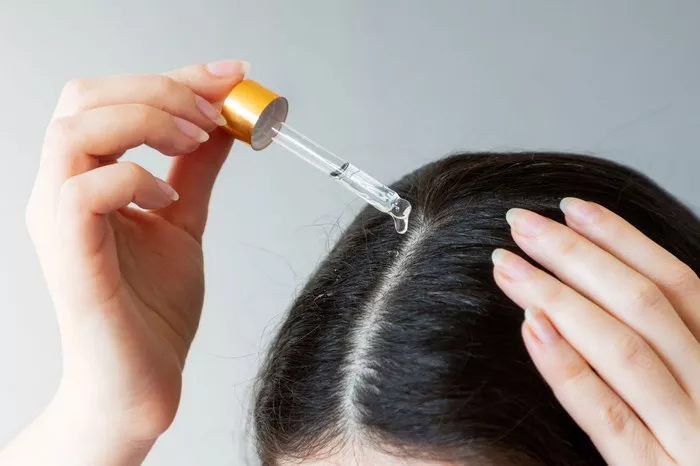Hair loss and thinning hair are common concerns affecting millions of people worldwide. While genetics, hormones, and lifestyle play significant roles, natural oils have gained popularity as affordable, non-invasive solutions to stimulate hair growth. This article explores oils scientifically linked to hair regrowth, their mechanisms, and how to use them effectively.
Understanding Hair Growth Basics
Hair grows in cycles: anagen (growth phase), catagen (transition), and telogen (resting phase). Factors like aging, stress, and nutrient deficiencies can disrupt this cycle, leading to shedding or stunted growth. Oils rich in vitamins, antioxidants, and fatty acids can nourish the scalp, strengthen hair follicles, and extend the anagen phase. Let’s dive into the top oils backed by research and tradition.
Castor Oil
What It Is: A thick, pale-yellow oil extracted from castor beans.
Key Components: Ricinoleic acid (90%), omega-6 fatty acids, vitamin E.
How It Works:
- Boosts Circulation: Ricinoleic acid reduces scalp inflammation and improves blood flow, delivering nutrients to follicles.
- Fights Infections: Antimicrobial properties combat dandruff and fungal issues.
- Moisturizes: Prevents dryness and breakage by sealing in moisture.
Scientific Evidence:
A 2020 study in Journal of Cosmetic Dermatology found castor oil increased hair luster and flexibility. While human trials are limited, its hydrating effects are well-documented.
How to Use:
- Mix with lighter oils (e.g., coconut) to ease application.
- Apply to scalp and hair, leave overnight, rinse with shampoo.
- Use 1–2 times weekly.
Precautions: Heavy texture may clog pores; patch test first.
Rosemary Oil
What It Is: An essential oil from rosemary leaves, with a herbal scent.
Key Components: Antioxidants (carnosic acid), anti-inflammatory compounds.
How It Works:
- Stimulates Follicles: Enhances blood circulation, mimicking minoxidil (a common hair-growth drug).
- Reduces DHT: Dihydrotestosterone (DHT) is a hormone linked to hair loss; rosemary may block its effects.
Scientific Evidence:
A 2015 Skinmed study compared rosemary oil to minoxidil in androgenetic alopecia patients. After six months, both groups saw significant hair growth, with rosemary causing less scalp itching.
How to Use:
- Dilute 3–5 drops in 1 tbsp carrier oil (e.g., jojoba).
- Massage into scalp 2–3 times weekly.
Precautions: Avoid during pregnancy.
Coconut Oil
What It Is: A tropical oil derived from coconut meat.
Key Components: Lauric acid, medium-chain triglycerides (MCTs).
How It Works:
- Prevents Protein Loss: Penetrates hair shafts to reduce protein loss during washing.
- Hydrates Scalp: Reduces dryness and flakiness.
Scientific Evidence:
A 2003 Journal of Cosmetic Science study found coconut oil reduced hair damage when used pre-wash.
How to Use:
- Apply as a pre-shampoo mask for 30 minutes.
- Use virgin, cold-pressed coconut oil for best results.
Precautions: May cause buildup on fine hair; use sparingly.
Peppermint Oil
What It Is: A minty essential oil known for its cooling effect.
Key Components: Menthol, menthone.
How It Works:
- Stimulates Blood Flow: Menthol creates a tingling sensation, boosting circulation to follicles.
- Prolongs Anagen Phase: Animal studies suggest it increases follicle depth and number.
Scientific Evidence:
A 2014 Toxicological Research study on mice showed peppermint oil induced faster hair growth than saline or minoxidil.
How to Use:
- Mix 2–3 drops with 1 tbsp carrier oil.
- Apply 3 times weekly.
Precautions: Overuse may cause irritation.
Argan Oil
What It Is: “Liquid gold” from Moroccan argan tree kernels.
Key Components: Vitamin E, antioxidants, fatty acids.
How It Works:
- Protects Follicles: Antioxidants neutralize free radicals from pollution/UV rays.
- Softens Hair: Reduces split ends and frizz.
Scientific Evidence:
A 2013 Evidence-Based Complementary and Alternative Medicine study noted argan oil’s antioxidant properties support scalp health.
How to Use:
- Apply 2–3 drops to damp hair as a leave-in conditioner.
Onion Oil
What It Is: Extracted from onion bulbs, rich in sulfur.
Key Components: Sulfur, antioxidants, potassium.
How It Works:
- Boosts Collagen: Sulfur strengthens hair structure.
- Antibacterial: Reduces scalp infections.
Scientific Evidence:
A 2002 Journal of Dermatology study found onion juice improved hair regrowth in 74% of participants with alopecia areata.
How to Use:
- Blend onions, strain juice, apply to scalp for 15 minutes before washing.
- Use 2–3 times weekly.
Precautions: Strong odor; mix with essential oils.
Jojoba Oil
What It Is: A liquid wax from jojoba seeds.
Key Components: Similar to scalp sebum, vitamin E.
How It Works:
- Balances Sebum: Clears clogged follicles by dissolving excess oil.
- Moisturizes: Non-greasy hydration.
Scientific Evidence:
A 2012 Research Journal of Medicinal Plant study found jojoba oil promotes wound healing, suggesting scalp benefits.
How to Use:
- Massage into scalp 2–3 times weekly.
How to Use Oils for Maximum Results
- Patch Test: Apply diluted oil to your forearm; wait 24 hours.
- Cleanse First: Use a gentle shampoo to remove buildup.
- Warm the Oil: Slightly heat oils for better absorption.
- Massage Gently: Use fingertips to stimulate blood flow.
- Leave-In Time: 30 minutes to overnight, depending on oil.
- Rinse Thoroughly: Avoid residue with a sulfate-free shampoo.
- Pro Tip: Combine oils (e.g., rosemary + coconut) for enhanced benefits.
Additional Tips for Healthy Hair Growth
- Diet: Eat protein, iron, zinc, and vitamins A/C/D.
- Avoid Heat: Limit blow-drying and straightening.
- Manage Stress: Practice yoga or meditation to reduce cortisol.
- Trim Regularly: Prevent split ends every 6–8 weeks.
Conclusion
While no oil is a magic cure, rosemary, castor, and peppermint oils show promising scientific support for stimulating hair growth. Consistency is key—regular use for 3–6 months is often needed. Pair oils with a healthy lifestyle for optimal results. Always consult a dermatologist for severe hair loss to address underlying causes.
Related topics:
Which Oil Stimulates Hair Growth? A Comprehensive Guide
7 Best Shampoos for Oily Scalp and Thin Hair
7 Oils You Should Use for Scalp


